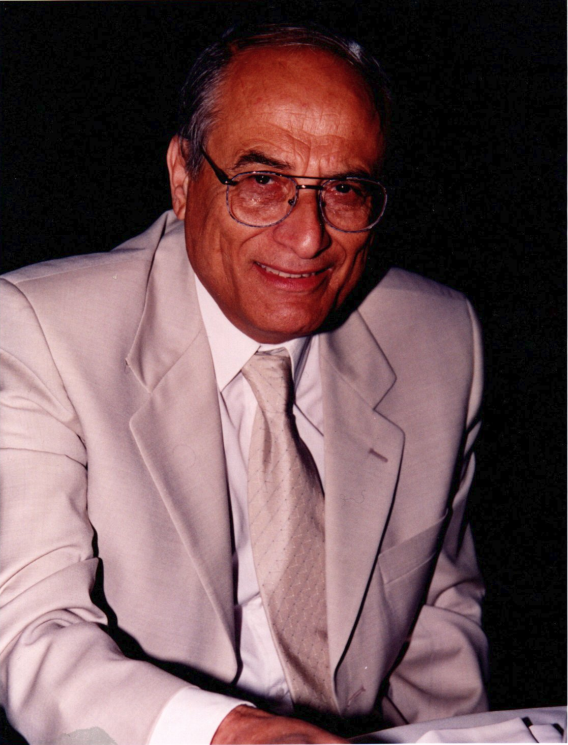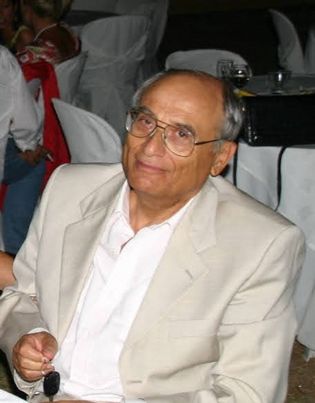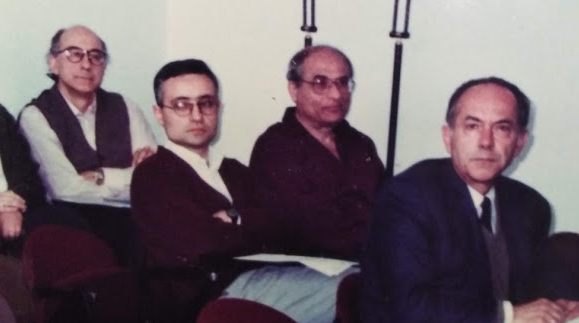George Tiktopoulos

George Tiktopoulos was born in Thessaloniki in 1931. His origin can be traced back to the city of Imera in Pontos. He completed his undergraduate studies at the School of Mechanical and Electrical Engineering of the National Technical University of Athens. For a short time he worked as an Engineer, while at the same time he was studying Mathematics. In 1960 he followed his true call, Theoretical Physics, and he immigrated to Chicago IL, USA in order to pursue a Ph.D. at the University of Chicago. He completed his Ph.D. in a very short time, working on the asymptotic behavior of Feynman diagrams. His work is cited in one of the classic books of Quantum Field Theory, that of J.Bjorken and S.Drell. His dissertation received the highest distinction given to UC students, that of the William Rainey Harper Fellow.
After that, he pursued an academic career, where he worked in some of the most prestigious academic institutions in the USA and Europe. Among them were Princeton University, the Rockefeller University, the University of California, Los Angeles, the École Normale Supérieure, Orsay, Saclay, the Brookhaven National Laboratory, the University of Wisconsin, Aspen, Colorado and, of course, CERN.
In 1976 he decided to return to Greece, where joined the National Centre of Scientific Research “Demokritos” in Athens. The news of his hiring was very exciting at that time and raised the expectation that it would bring a decisive upgrade of the quality of the research that a researcher of George’s caliber would bring to the Greek physics community. Besides his excellent research outcome, George made a great contribution to the future of physics in Greece, by teaching young researchers that would turn out to follow brilliant academic careers in physics in Greece and elsewhere. The graduate courses that he taught remain in the collective memory of all that had the great chance to attend, as milestones of rigor and clarity.
In 1978 he accepted a professorship at the National Technical University of Athens. He was selected among a pool of very important theoretical physicists in Greece. His teaching charisma became even more evident, since he was given the opportunity to teach to a wider student audience, including undergraduates. Among those engineering students were some that were greatly inspired by this great teacher, and decided to follow a career in theoretical physics. They are now faculty members of some of the most prestigious universities in Europe and the USA. He also continued his teaching work in physics graduate programs and he was the advisor of many Ph.D. students in theoretical high energy physics. After his retirement he continued the teaching of his famous, among graduate students, courses until the age of 75! George had a brilliant career and he was among the greatest physicists ever to be in Greek Universities. Perhaps the greatest...
We cannot do justice to George’s important contributions in physics in this short note. We mention his fundamental contributions in proving that gauge theories, which are the building blocks of today’s elementary particle theories, are the unique theories that are consistent and phenomenologically acceptable. His most famous work was on the infrared behavior of gauge theories, where one of the equations bear his name (the Cornwall-Tiktopoulos equation). We also mention his famous work with John M. Cornwall and David N. Levin (Phys.Rev.Lett. 30 (1973) 1268-1270) which shows, among other things, that the Higgs field restores the unitarity bound in processes like \(e^+ + e^- \rightarrow W^+ + W^- \) in the electroweak interactions of the Standard Model, which was an important problem for previous theories of the weak interactions in those times. In the words of Gerard ‘t Hooft[1] “... a crucial argument was added to this by Chris Llewellyn-Smith and by John Cornwall, David Levin, and George Tiktopoulos; they showed that requiring unitarity implies that the only such theories are gauge theories…”.
One of the most important aspects of George’s character was his well known humbleness. He was always introducing himself as a “teacher”, without ever mentioning that he was a Professor at the most prestigious academic institution in Greece.
This note, written on the occasion of his recent passing, attempts to redress somewhat the injustice done to a great scientist, which should have been honored and celebrated for his great contribution for advancing the quality of research in his country, as well as all his academic contributions. May he rest in peace forever!
The Theoretical Particle Physics Groups of the National Technical University of Athens:
K. Anagnostopoulos, K. Farakos, N. Irges, A. Kehagias, G. Koutsoumbas, C. Kouvaris, E. Kyriakopoulos, N. Mavromatos, E. Papantonopoulos, N. Trakas and G. Zoupanos.
Athens, April 15, 2021
[1] Gerard ‘t Hooft, in “The Rise of the Standard Model: A History of Particle Physics from 1964 to 1979”, ed. L Hoddeson et al., CUP 1997, p. 192


